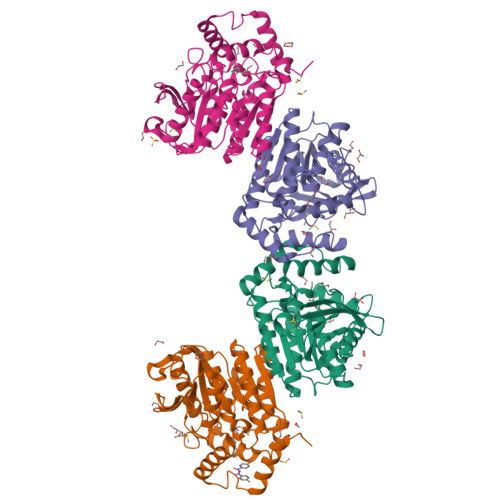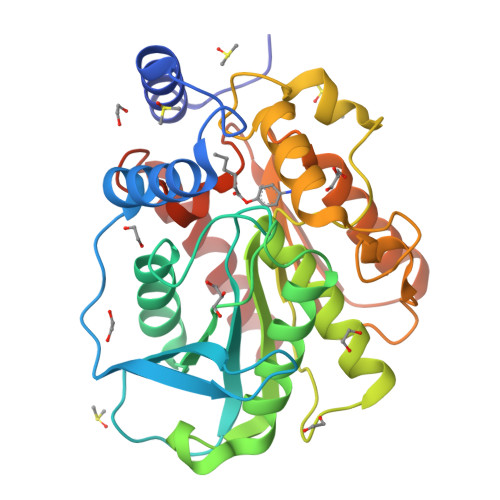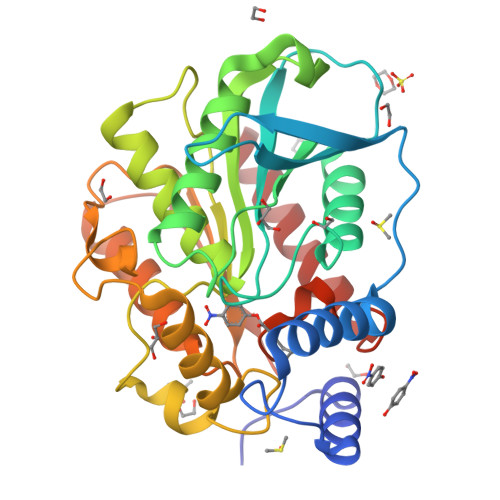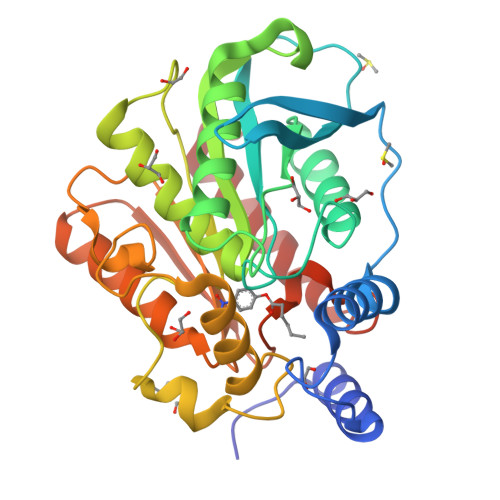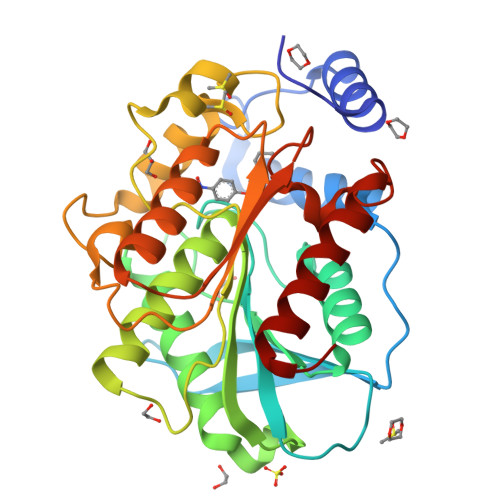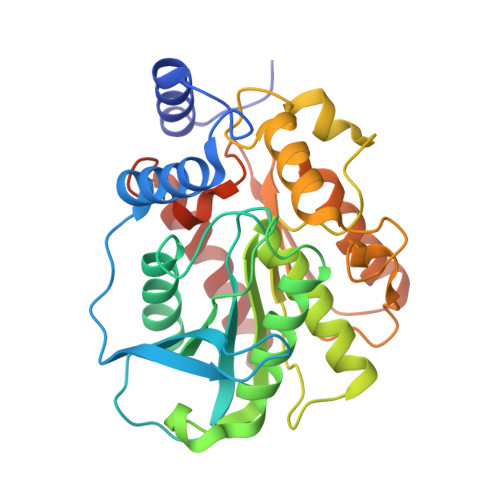Mechanism and Structural Insights Into a Novel Esterase, E53, Isolated From Erythrobacter longus .
Ding, Y., Nie, L., Yang, X.C., Li, Y., Huo, Y.Y., Li, Z., Gao, Y., Cui, H.L., Li, J., Xu, X.W.(2021) Front Microbiol 12: 798194-798194
- PubMed: 35069500
- DOI: https://doi.org/10.3389/fmicb.2021.798194
- Primary Citation of Related Structures:
7CI0, 7CIH, 7W8N - PubMed Abstract:
Esterases are a class of enzymes that split esters into an acid and an alcohol in a chemical reaction with water, having high potential in pharmaceutical, food and biofuel industrial applications. To advance the understanding of esterases, we have identified and characterized E53, an alkalophilic esterase from a marine bacterium Erythrobacter longus . The crystal structures of wild type E53 and three variants were solved successfully using the X-ray diffraction method. Phylogenetic analysis classified E53 as a member of the family IV esterase. The enzyme showed highest activity against p -nitrophenyl butyrate substrate at pH 8.5-9.5 and 40 ° C. Based on the structural feature, the catalytic pocket was defined as R1 (catalytic center), R2 (pocket entrance), and R3 (end area of pocket) regions. Nine variants were generated spanning R1-R3 and thorough functional studies were performed. Detailed structural analysis and the results obtained from the mutagenesis study revealed that mutations in the R1 region could regulate the catalytic reaction in both positive and negative directions; expanding the bottleneck in R2 region has improved the enzymatic activity; and R3 region was associated with the determination of the pH pattern of E53. N166A in R3 region showed reduced activity only under alkaline conditions, and structural analysis indicated the role of N166 in stabilizing the loop by forming a hydrogen bond with L193 and G233. In summary, the systematic studies on E53 performed in this work provide structural and functional insights into alkaliphilic esterases and further our knowledge of these enzymes.
Organizational Affiliation:
Key Laboratory of Marine Ecosystem Dynamics, Second Institute of Oceanography, Ministry of Natural Resources, Hangzhou, China.








